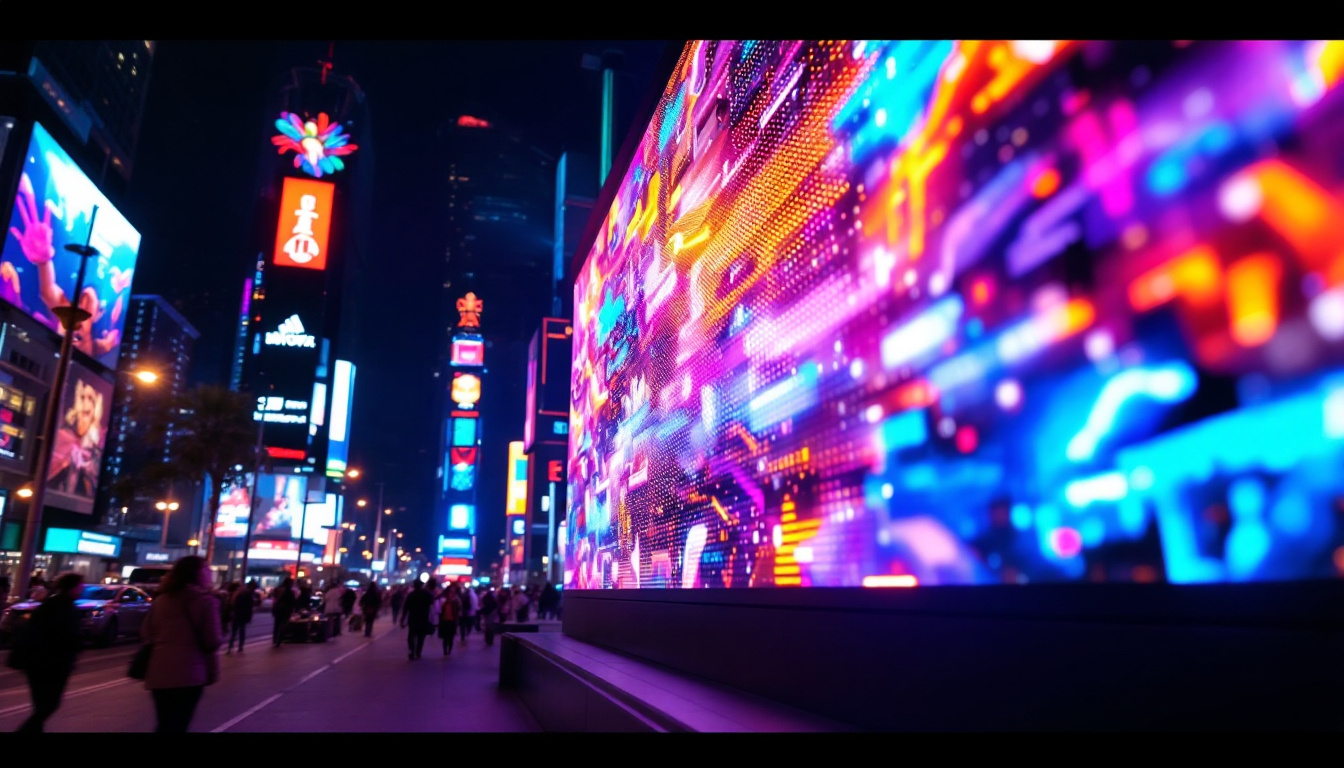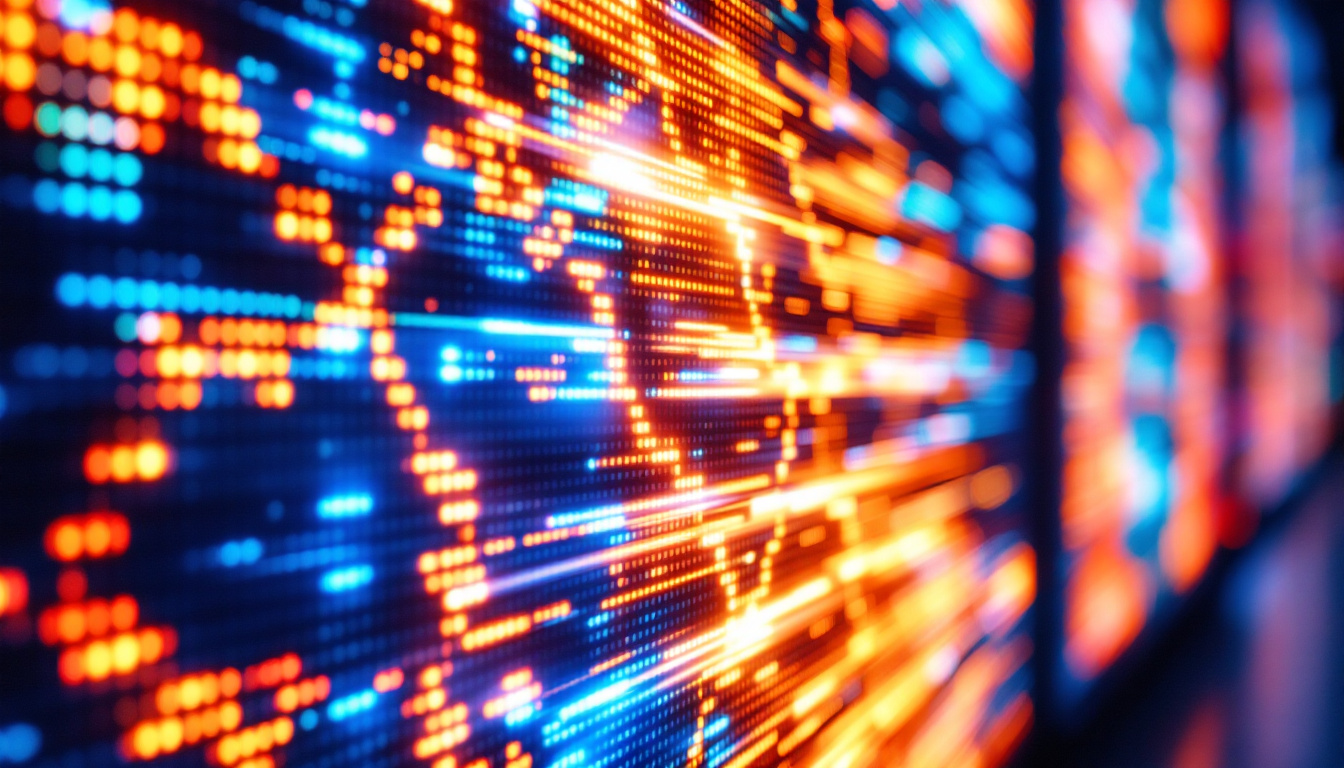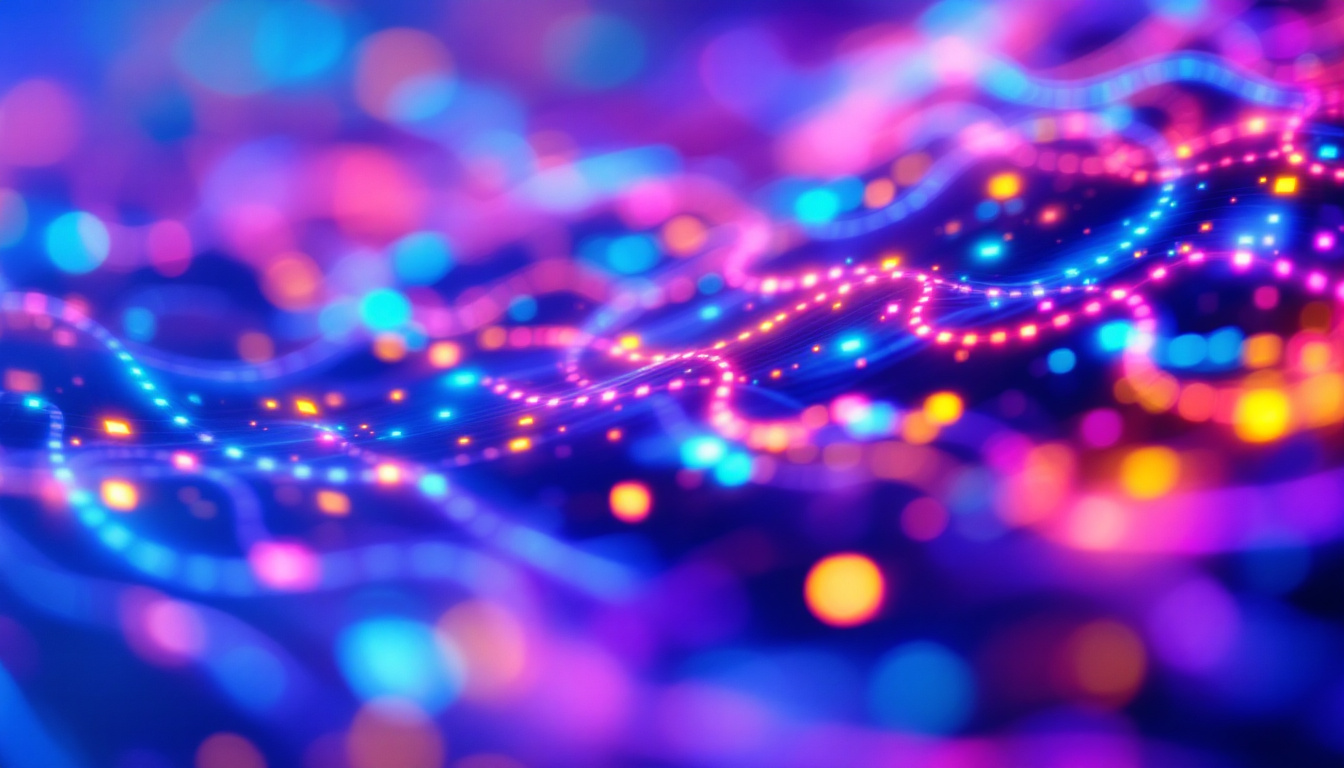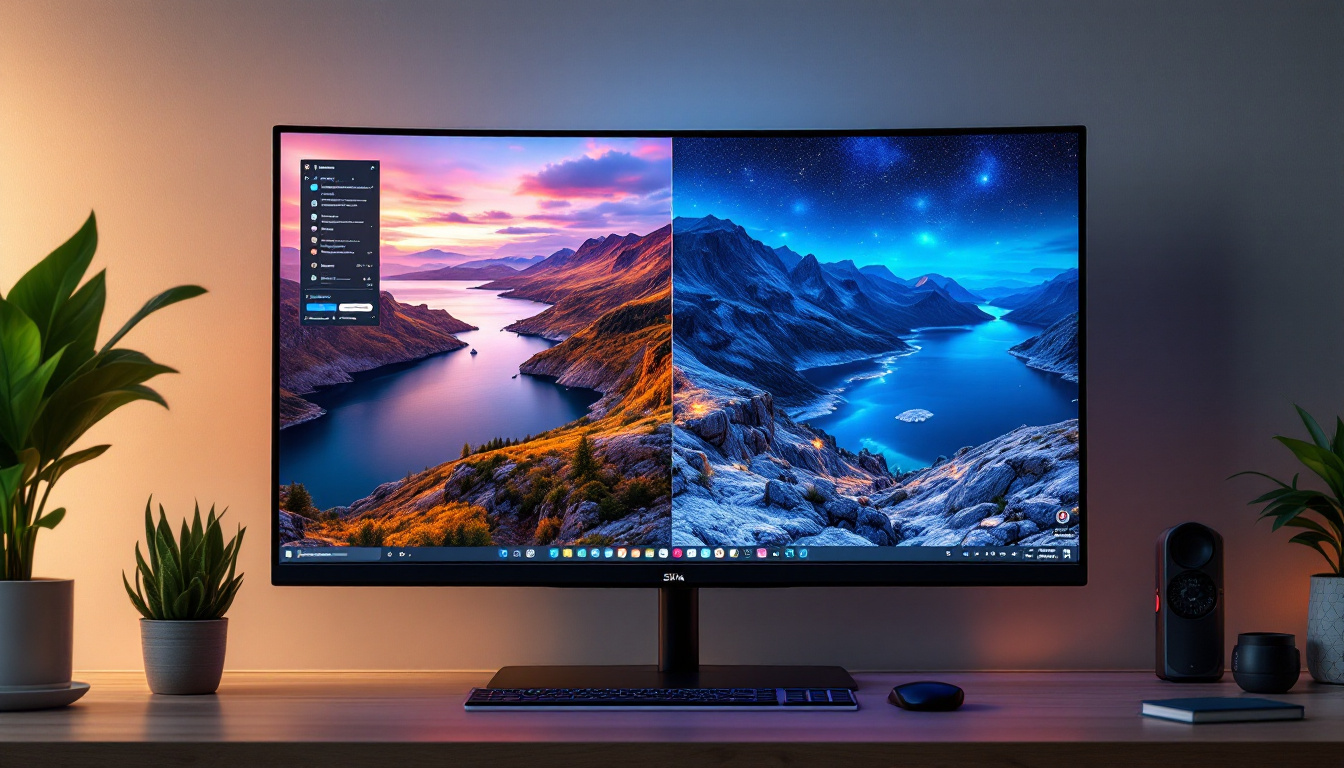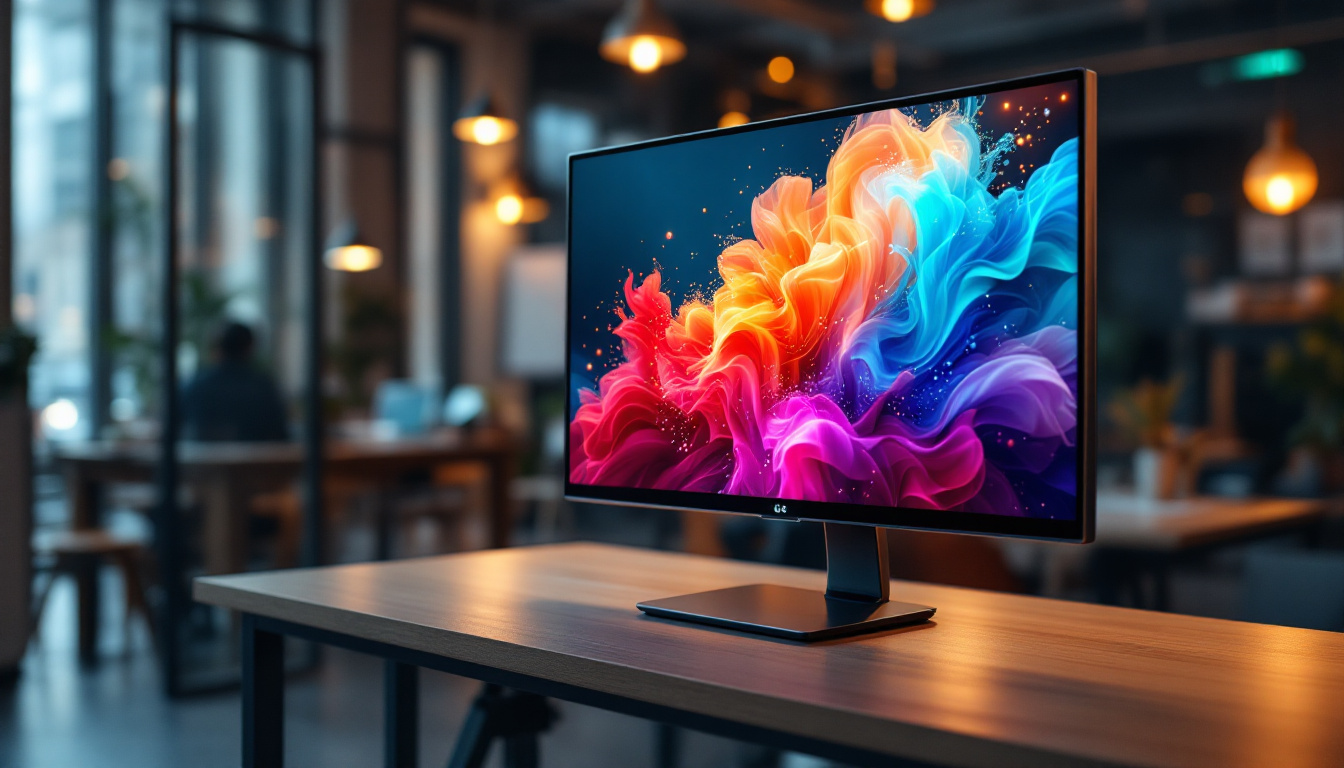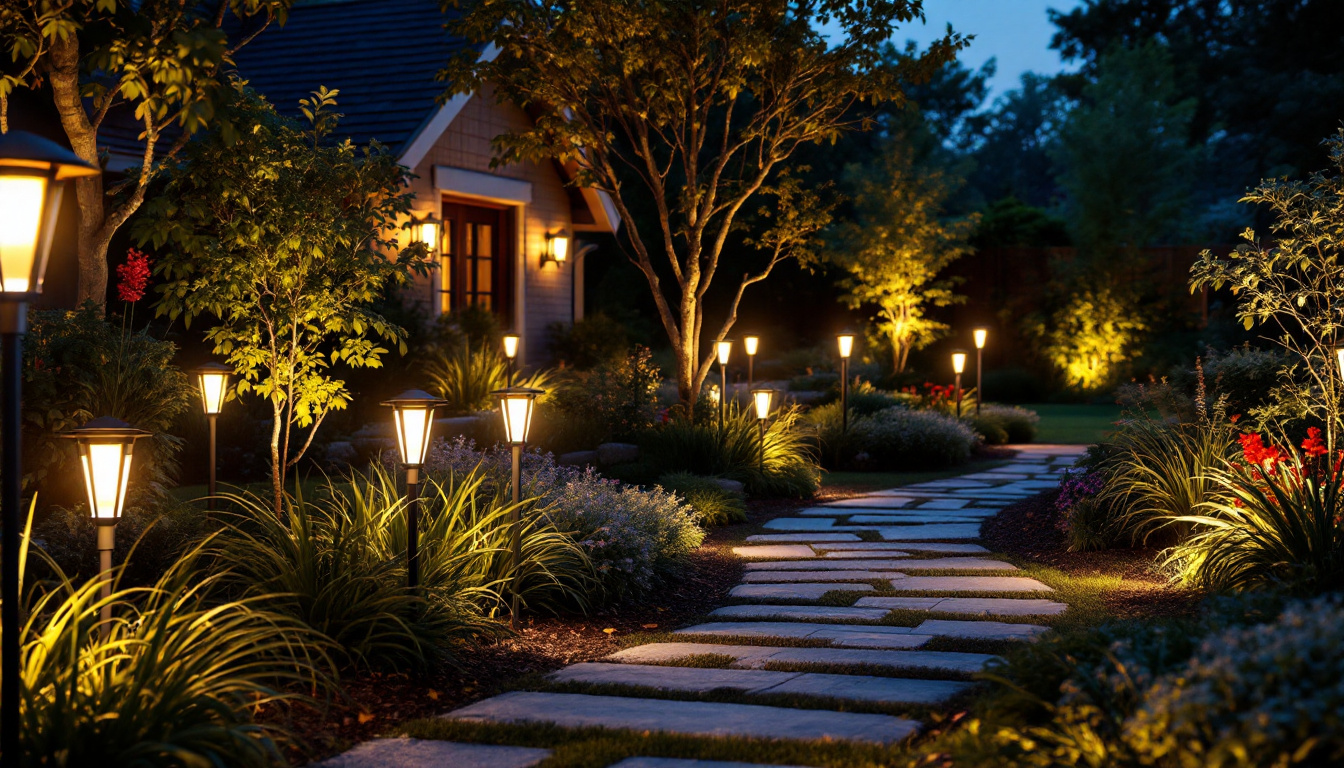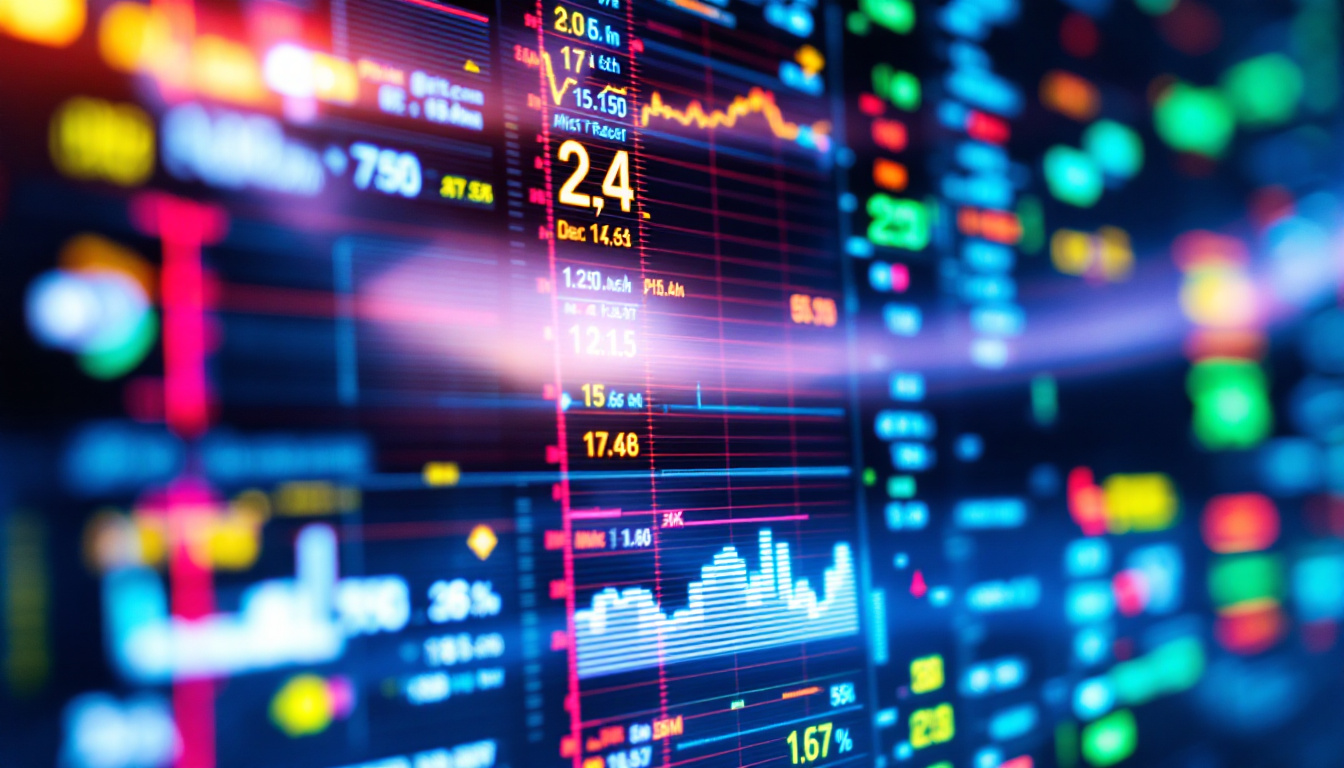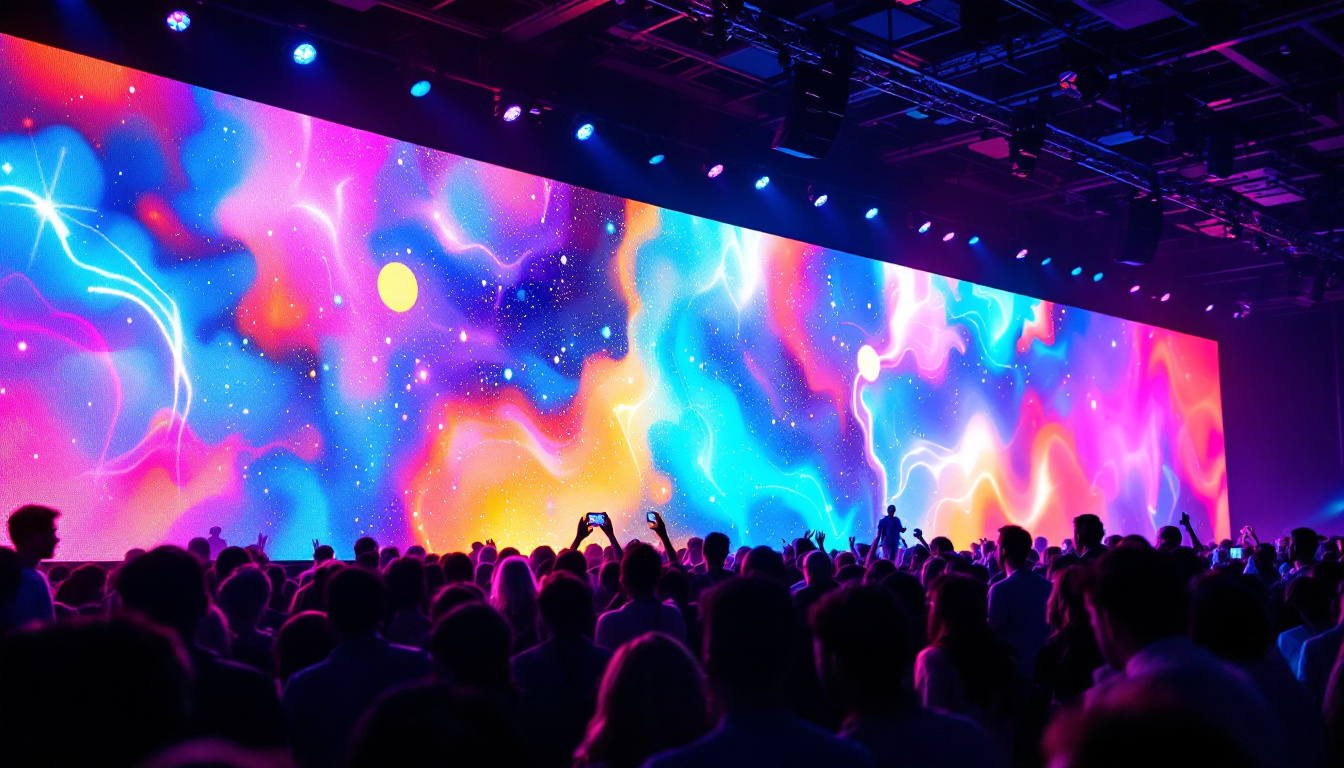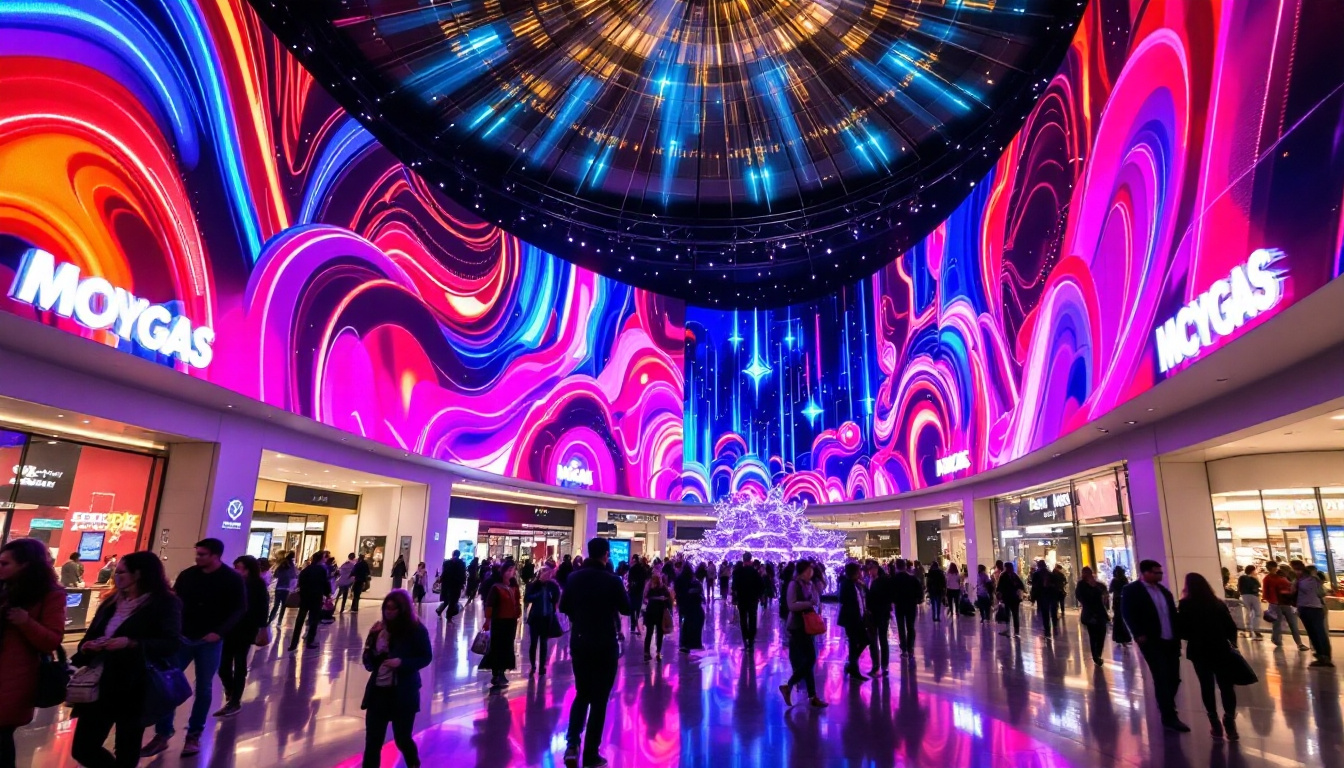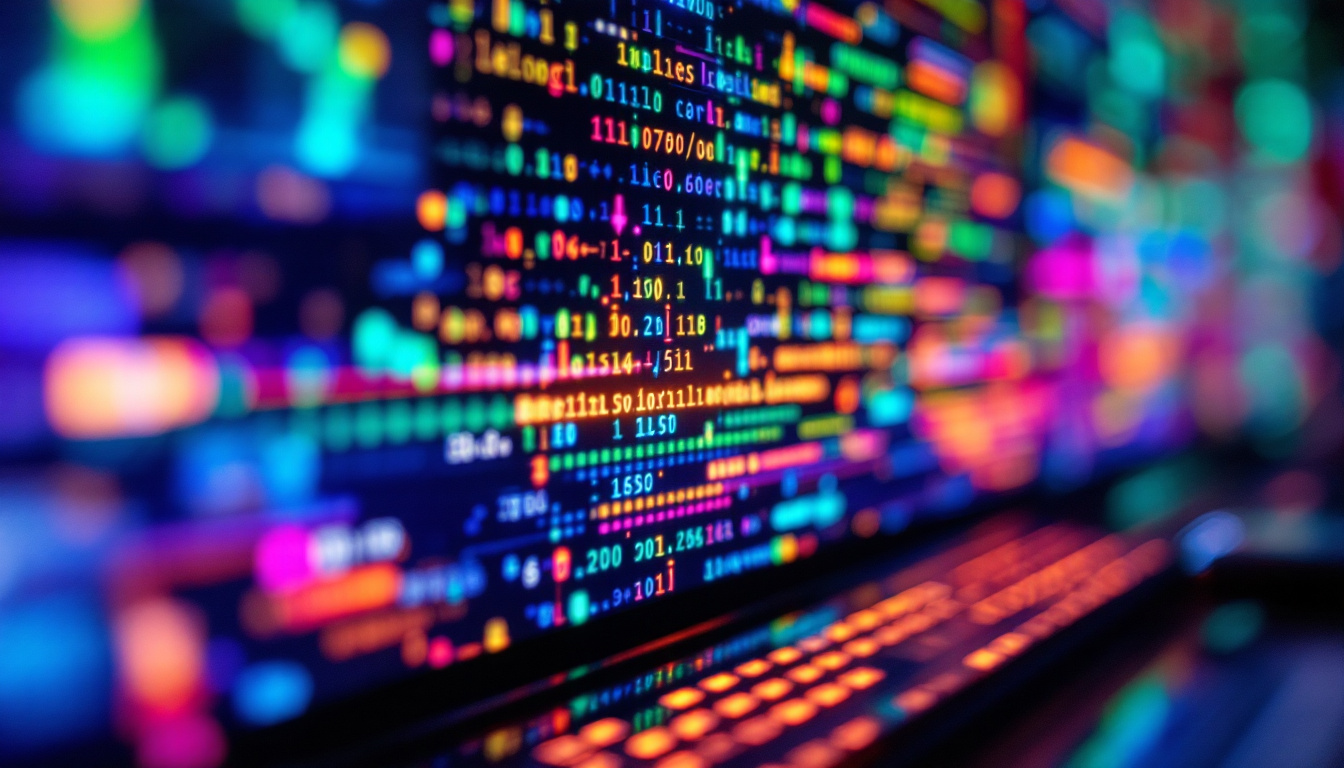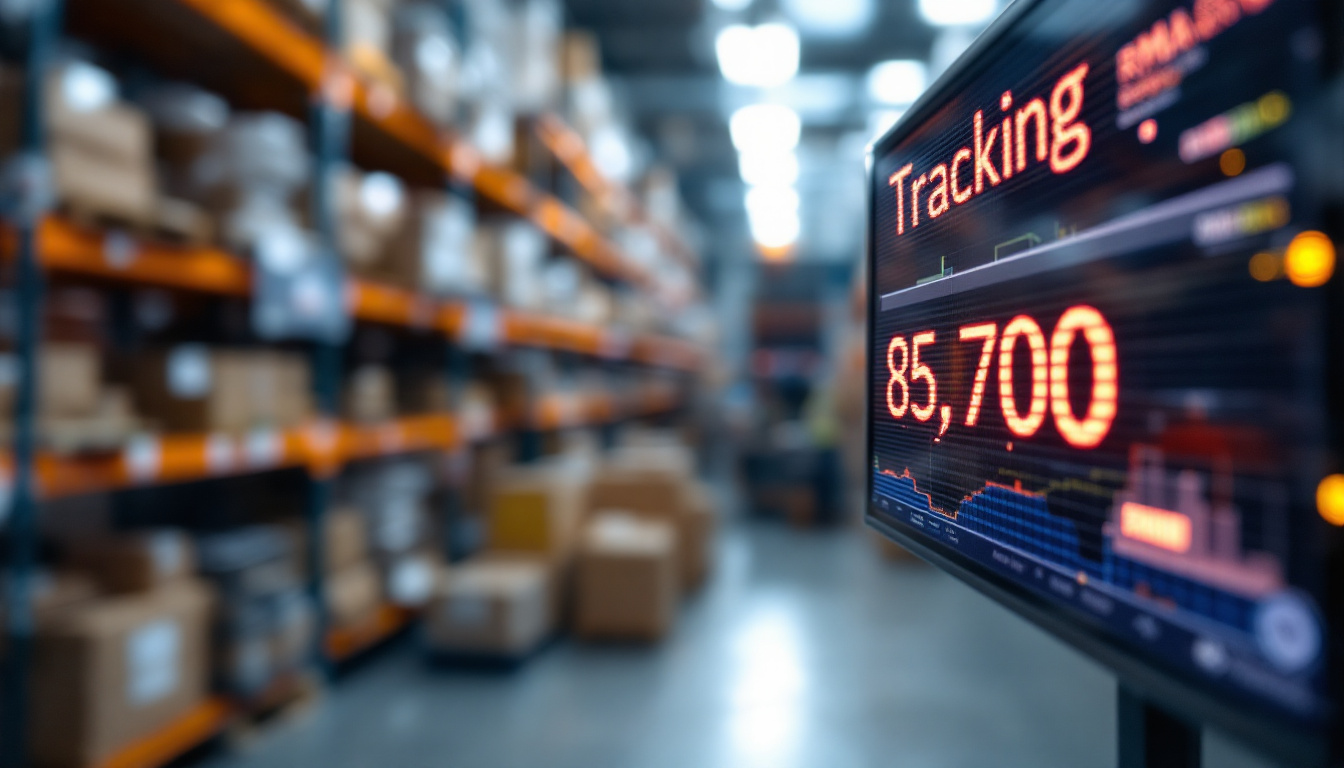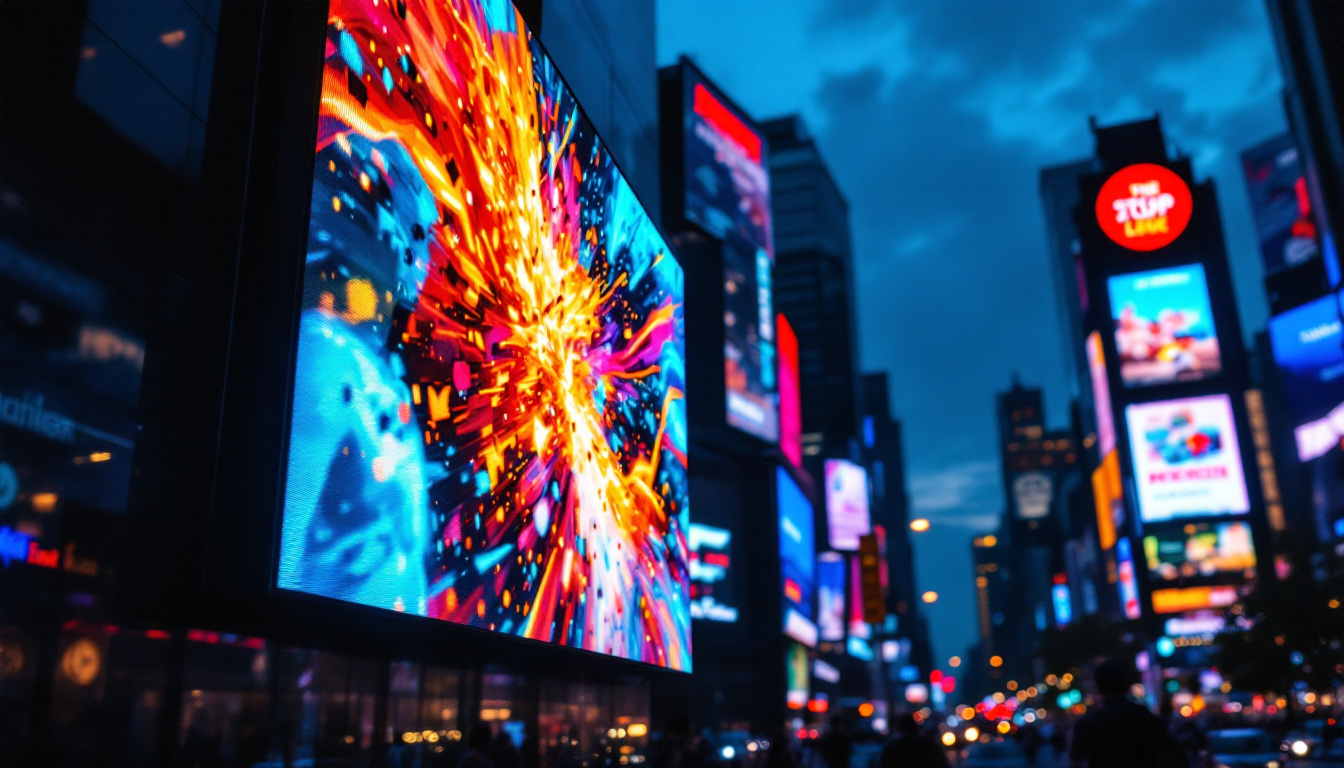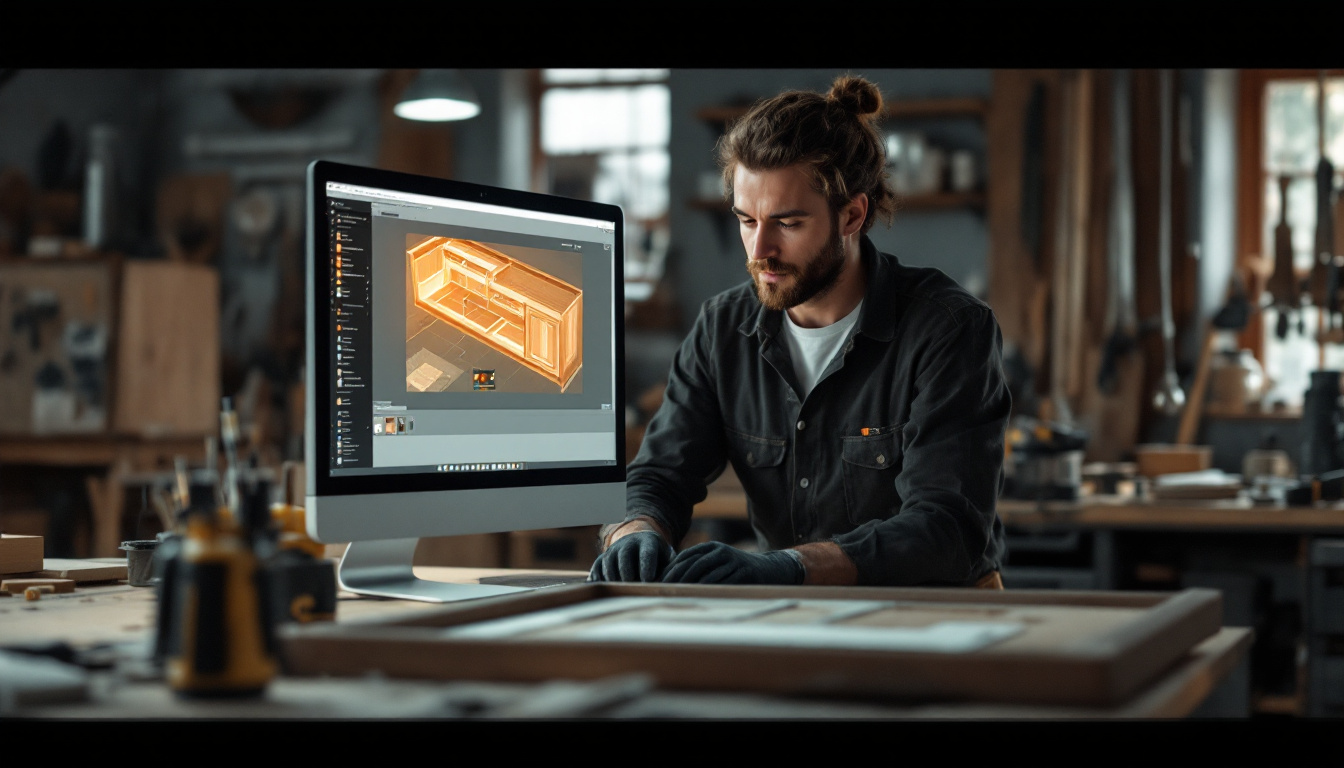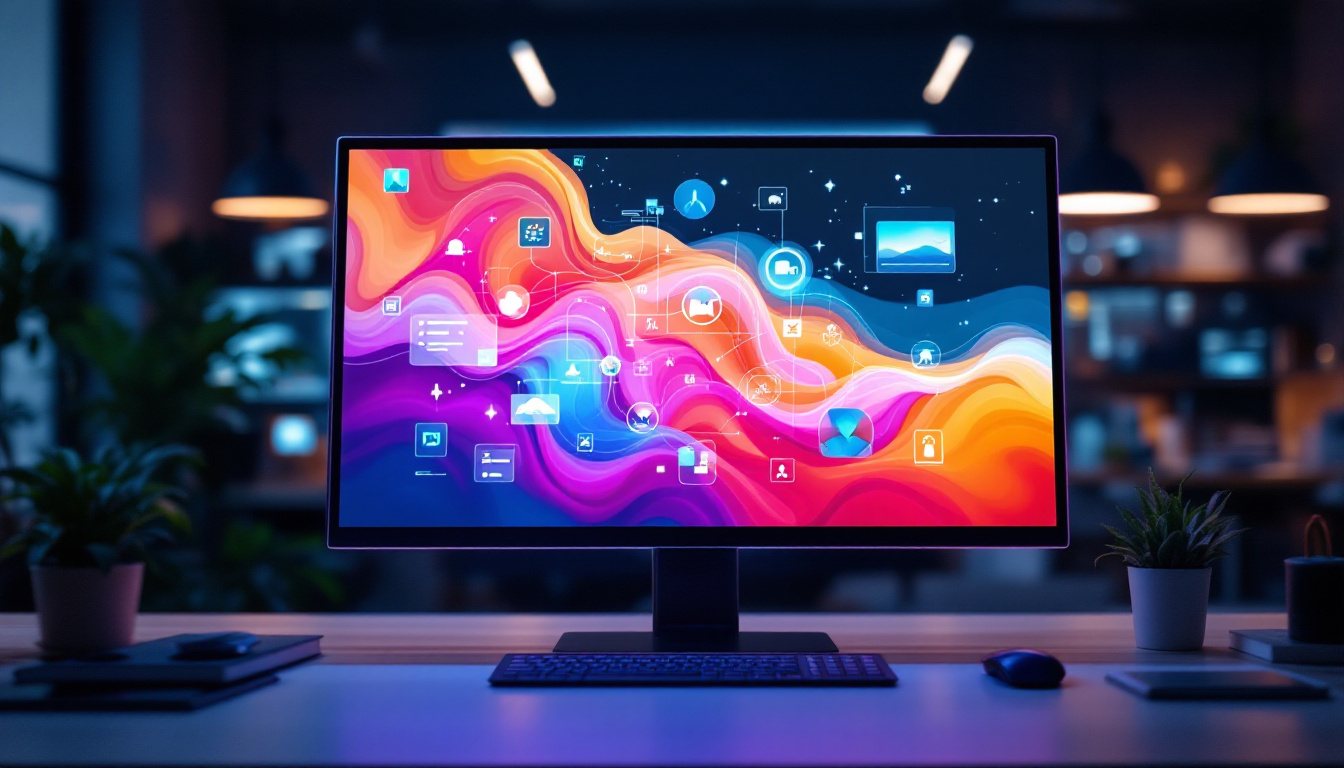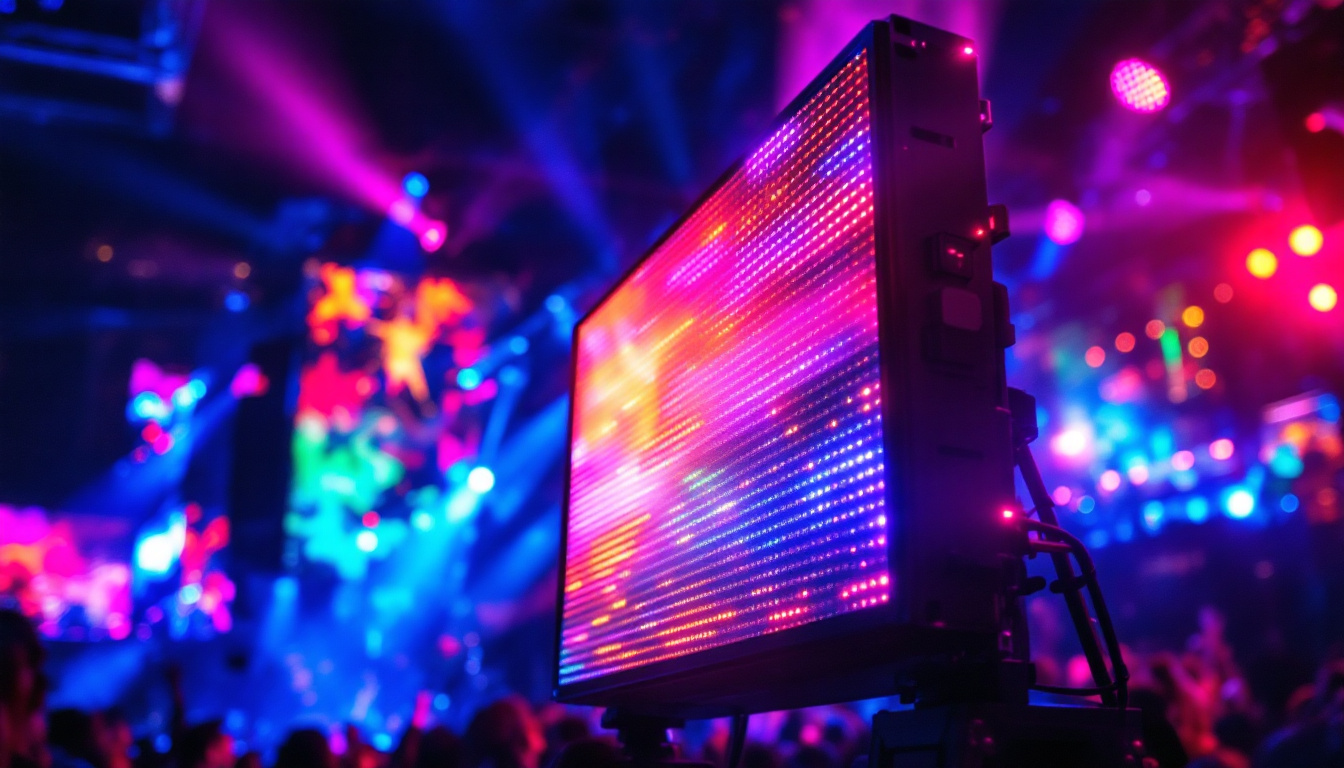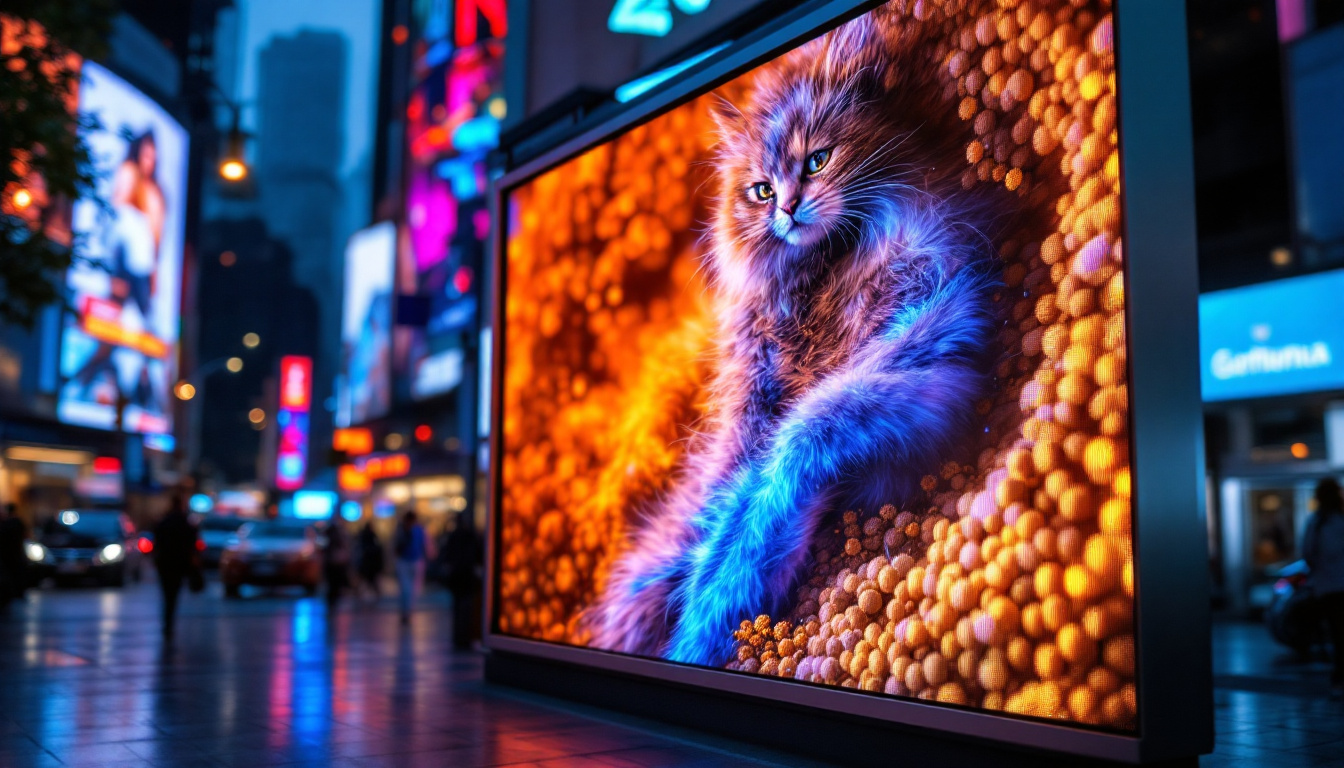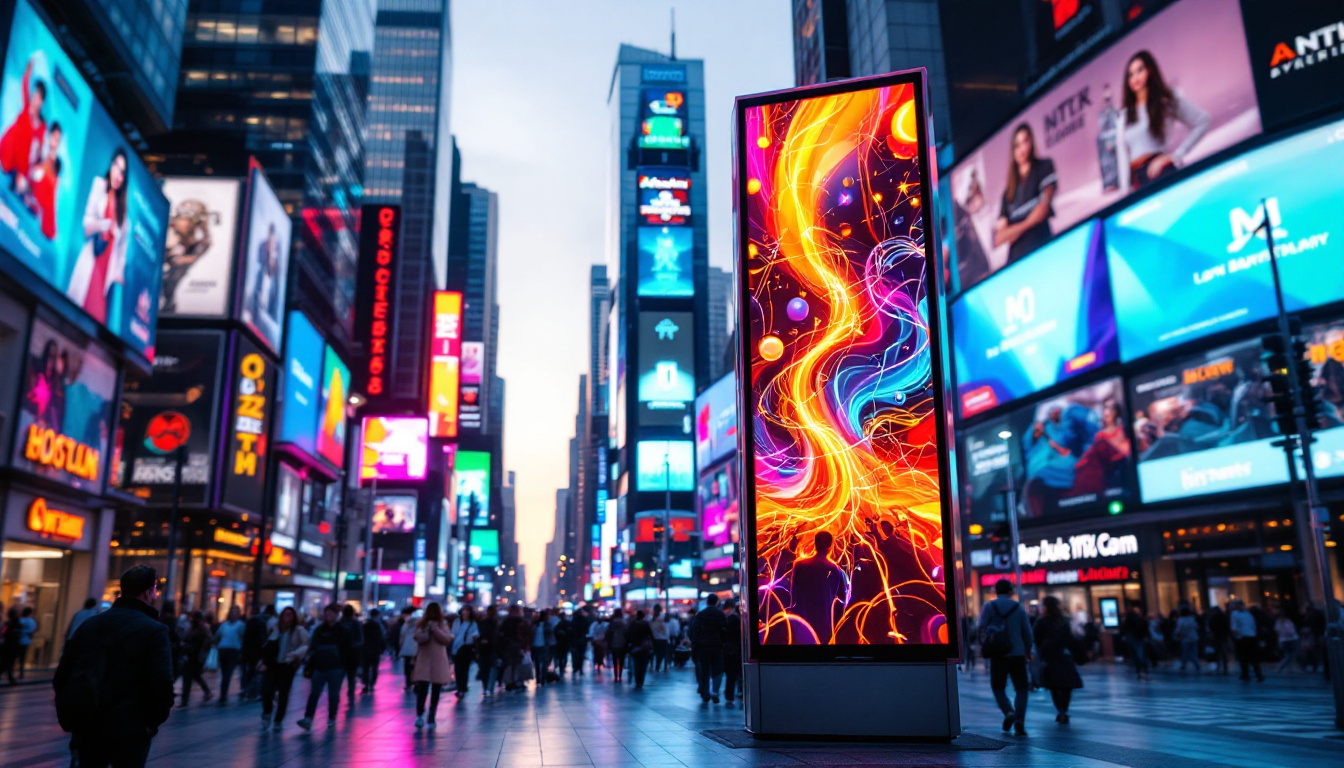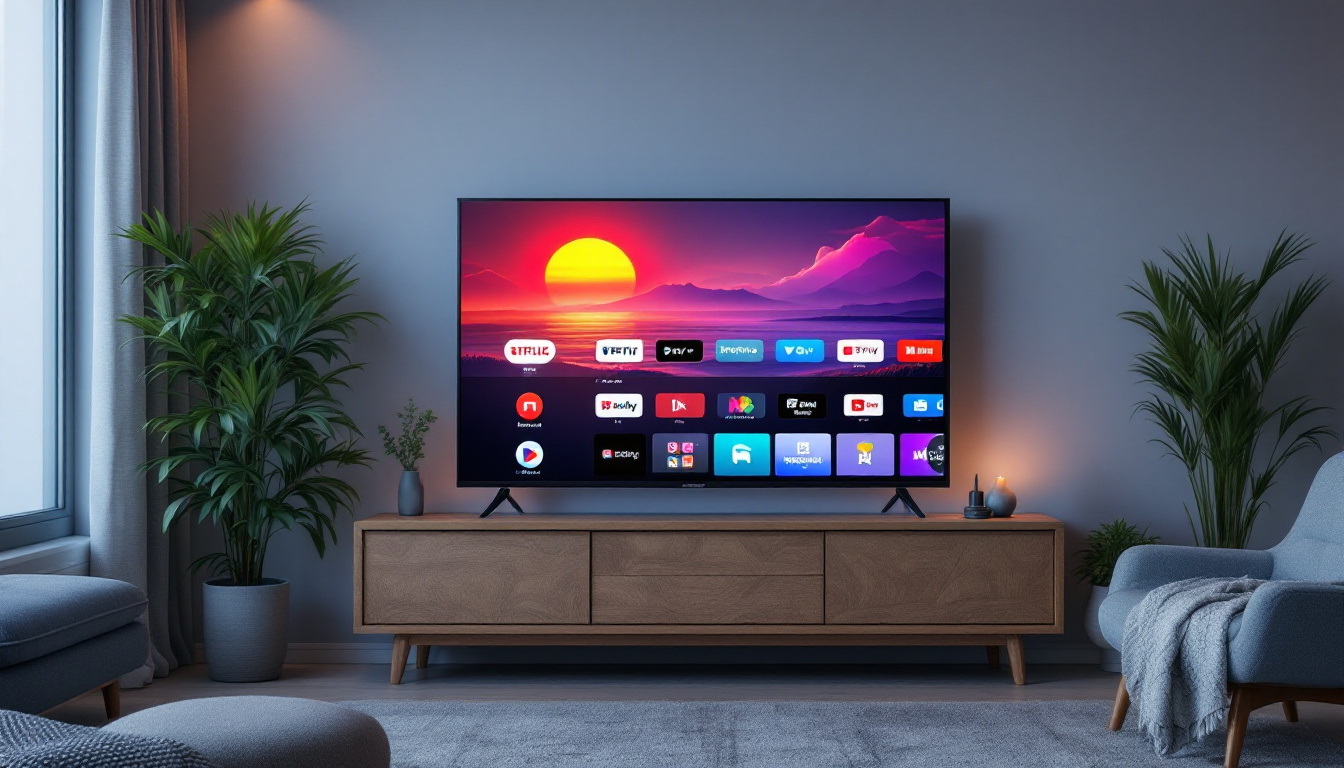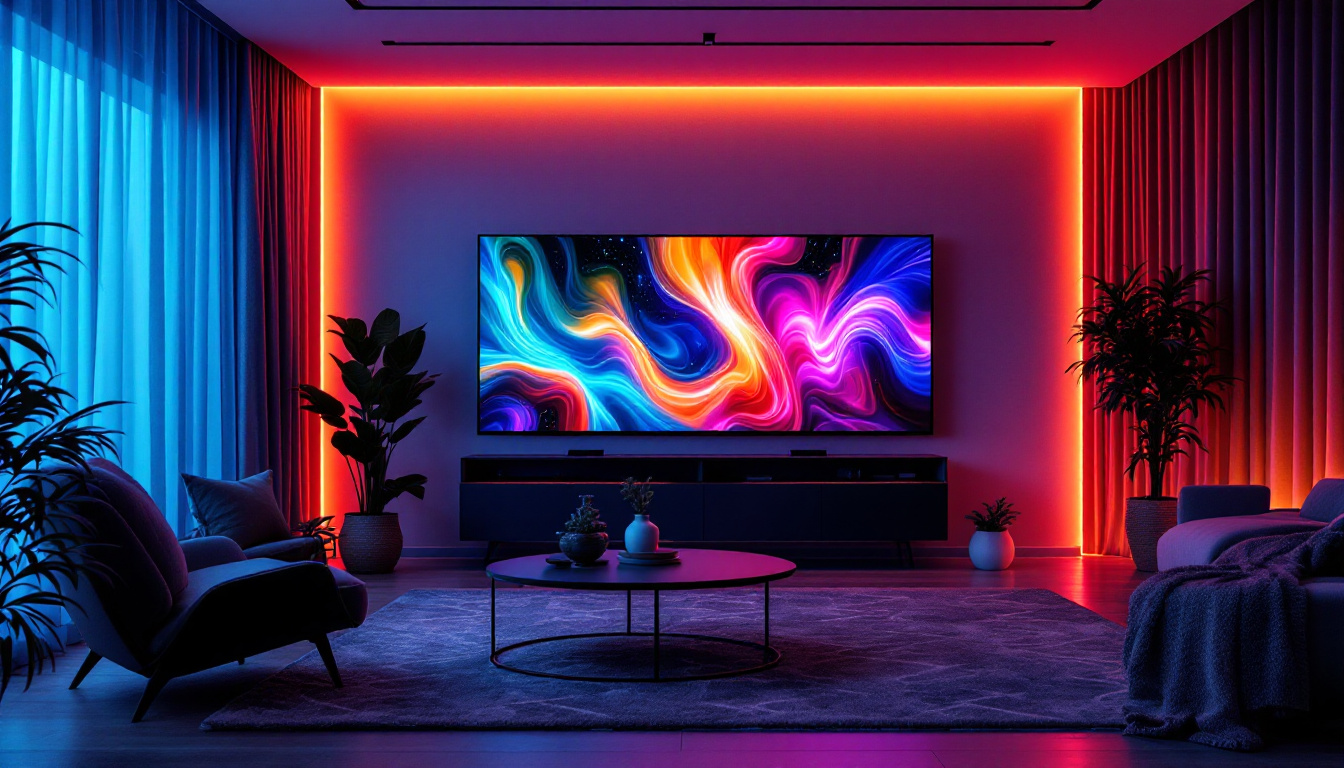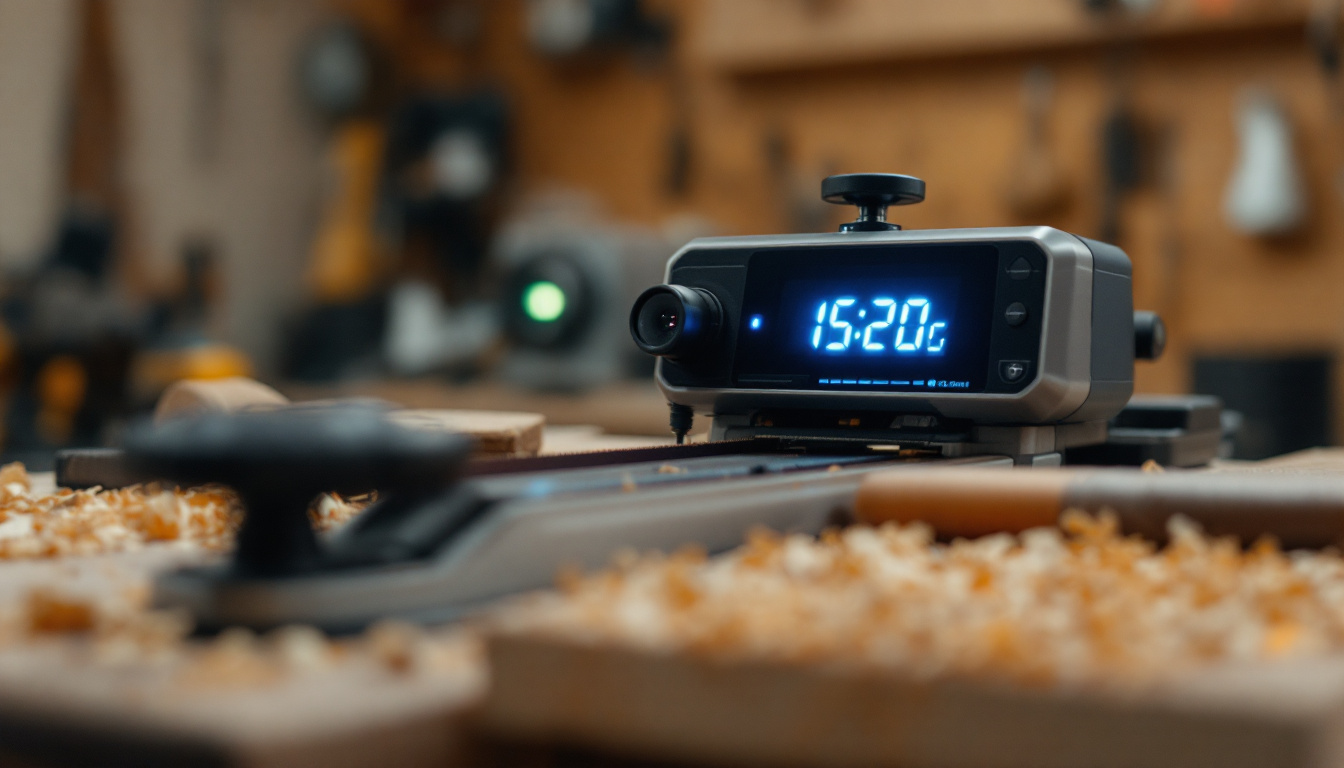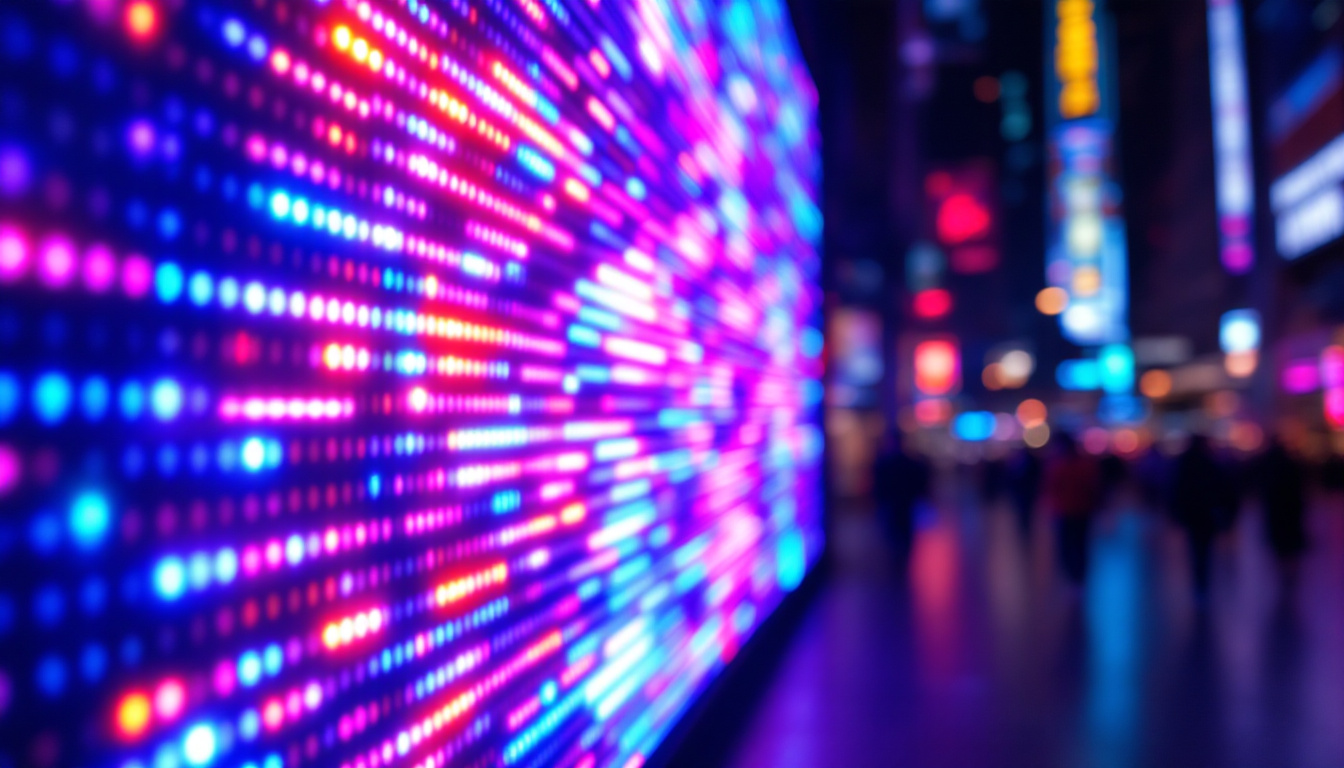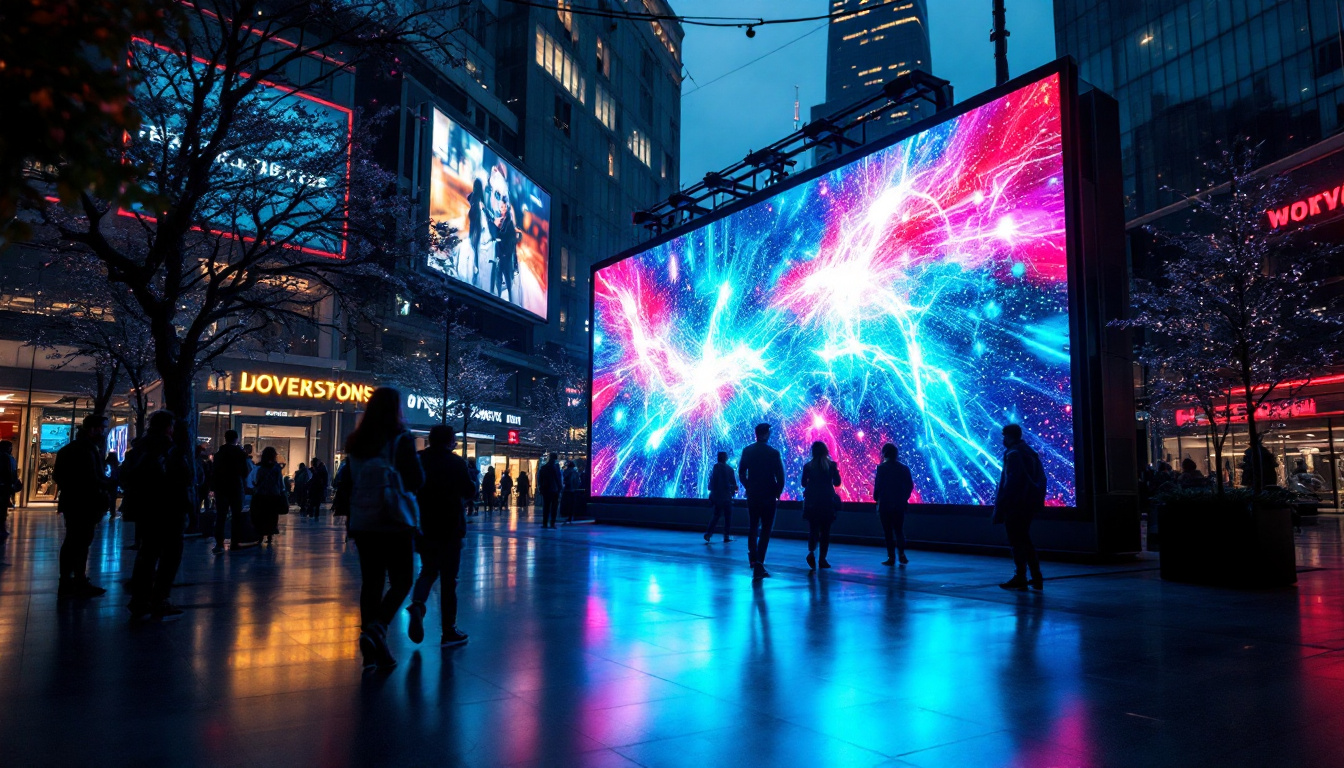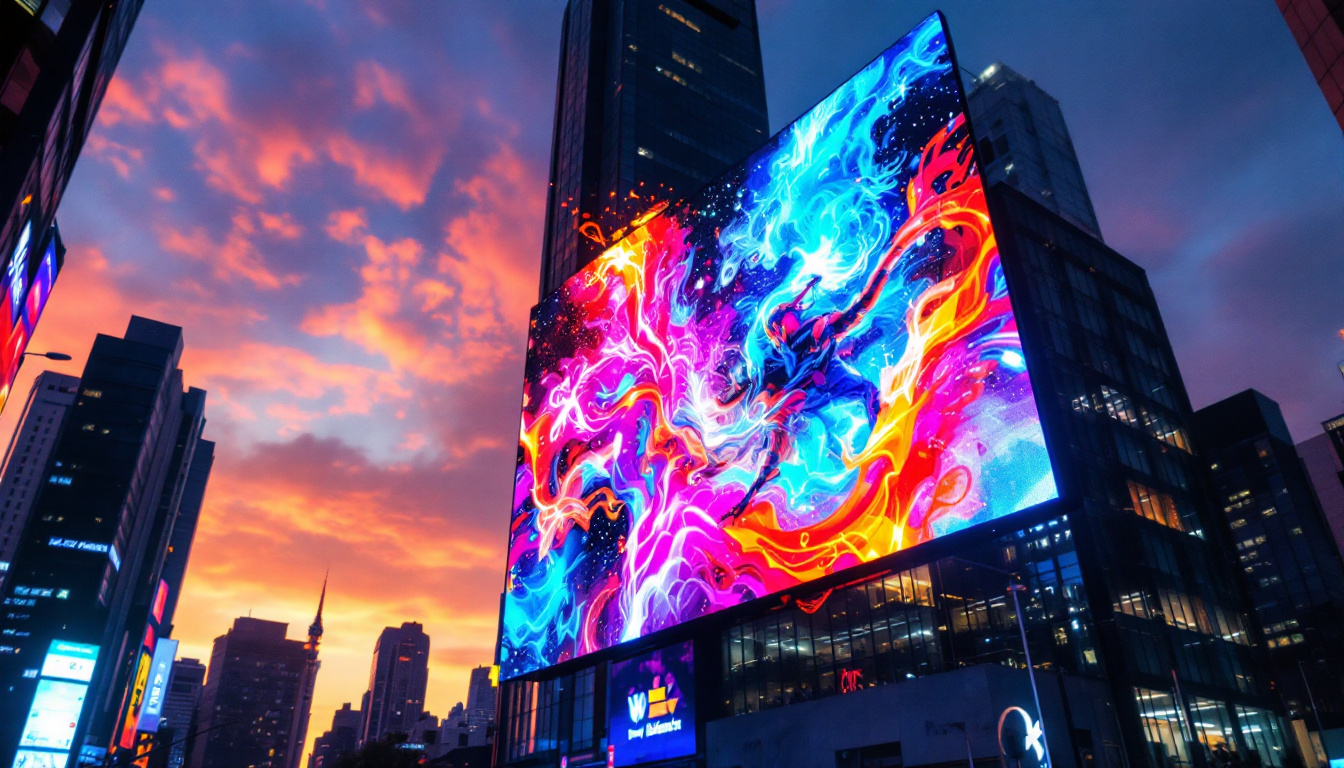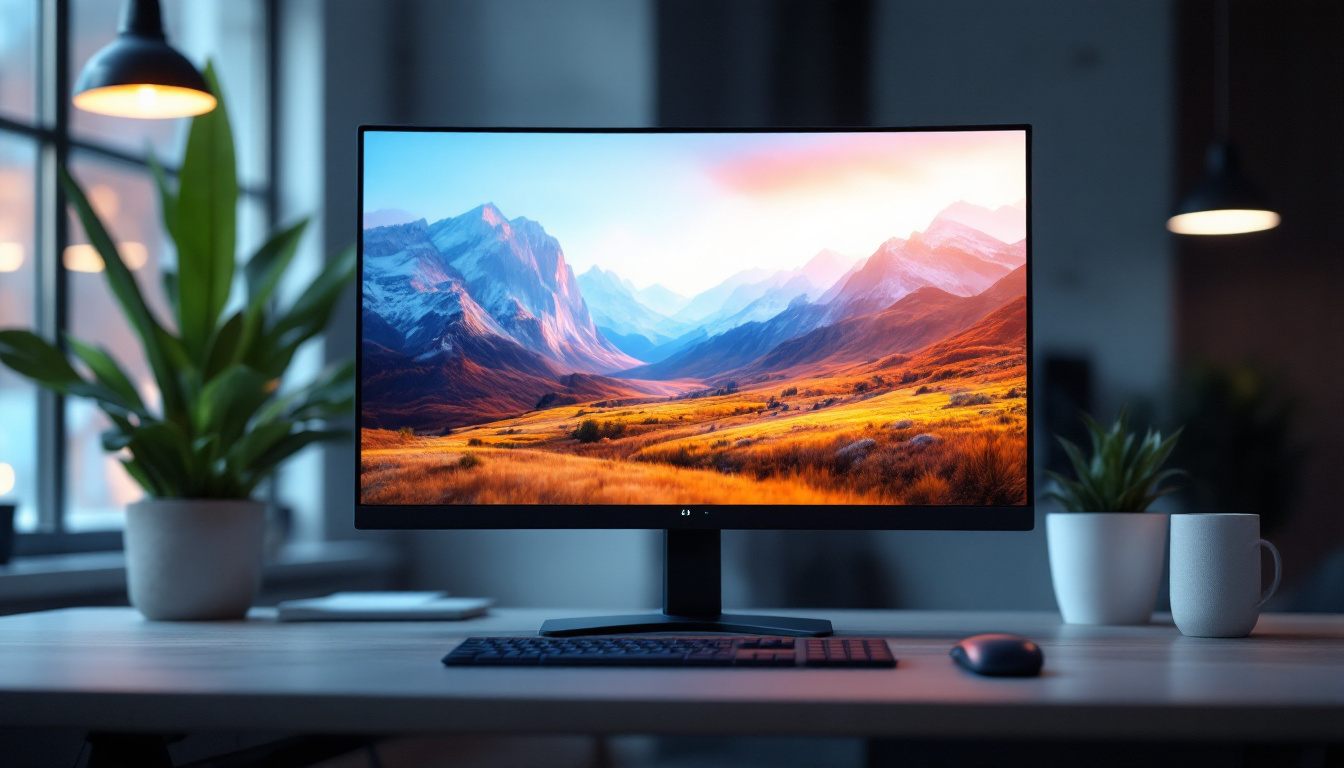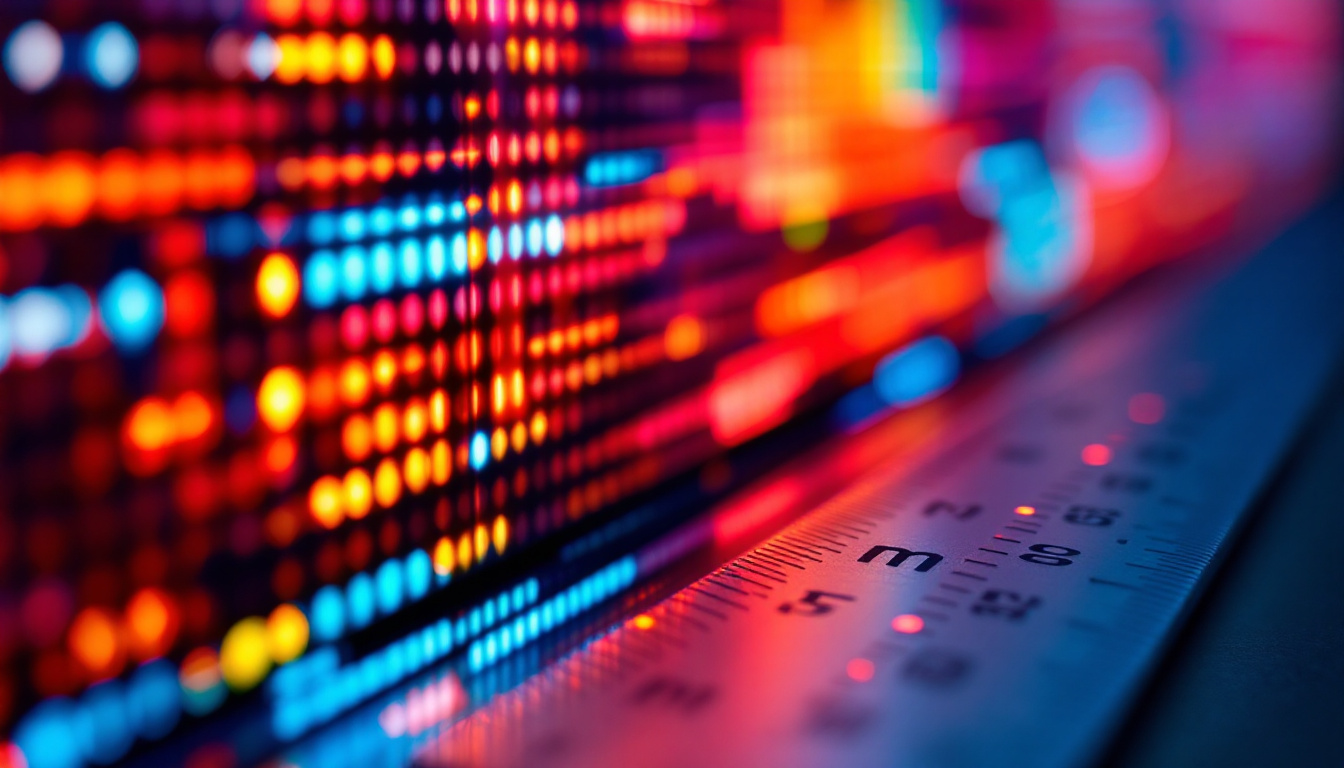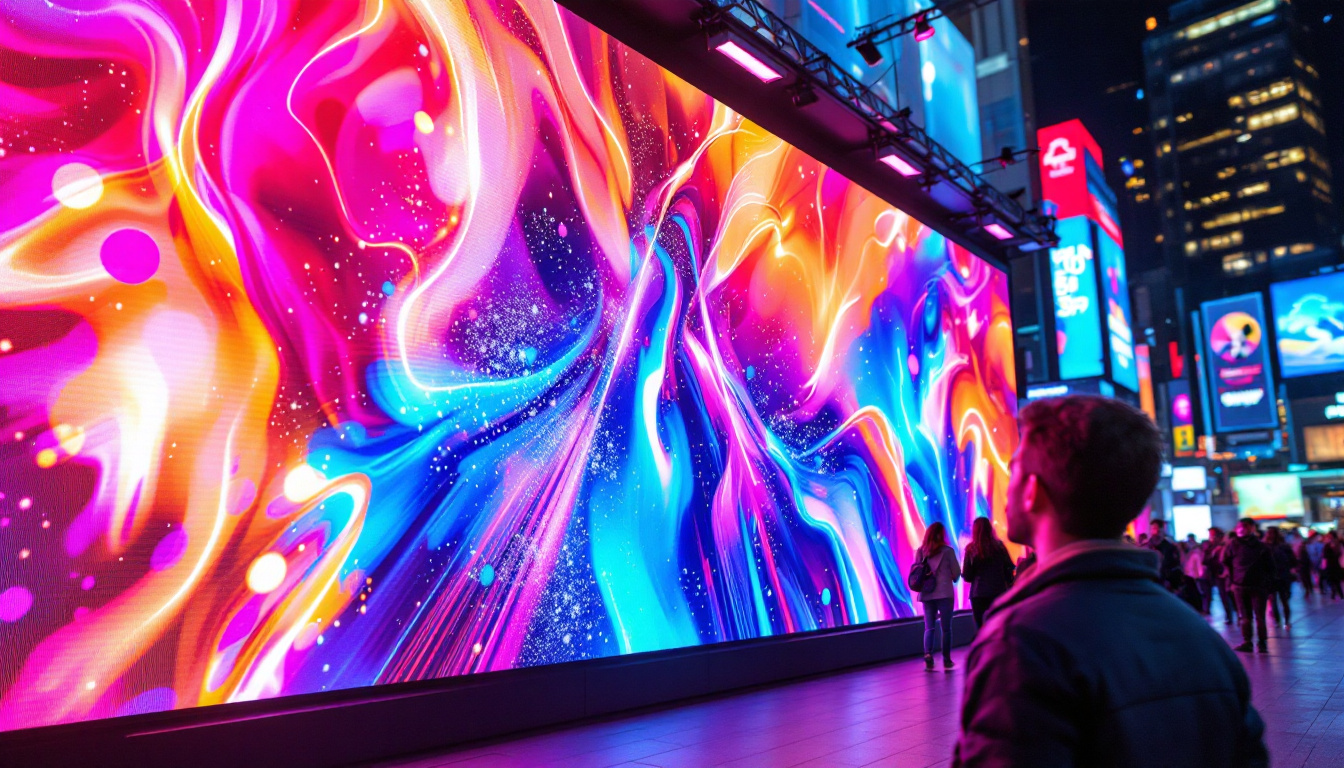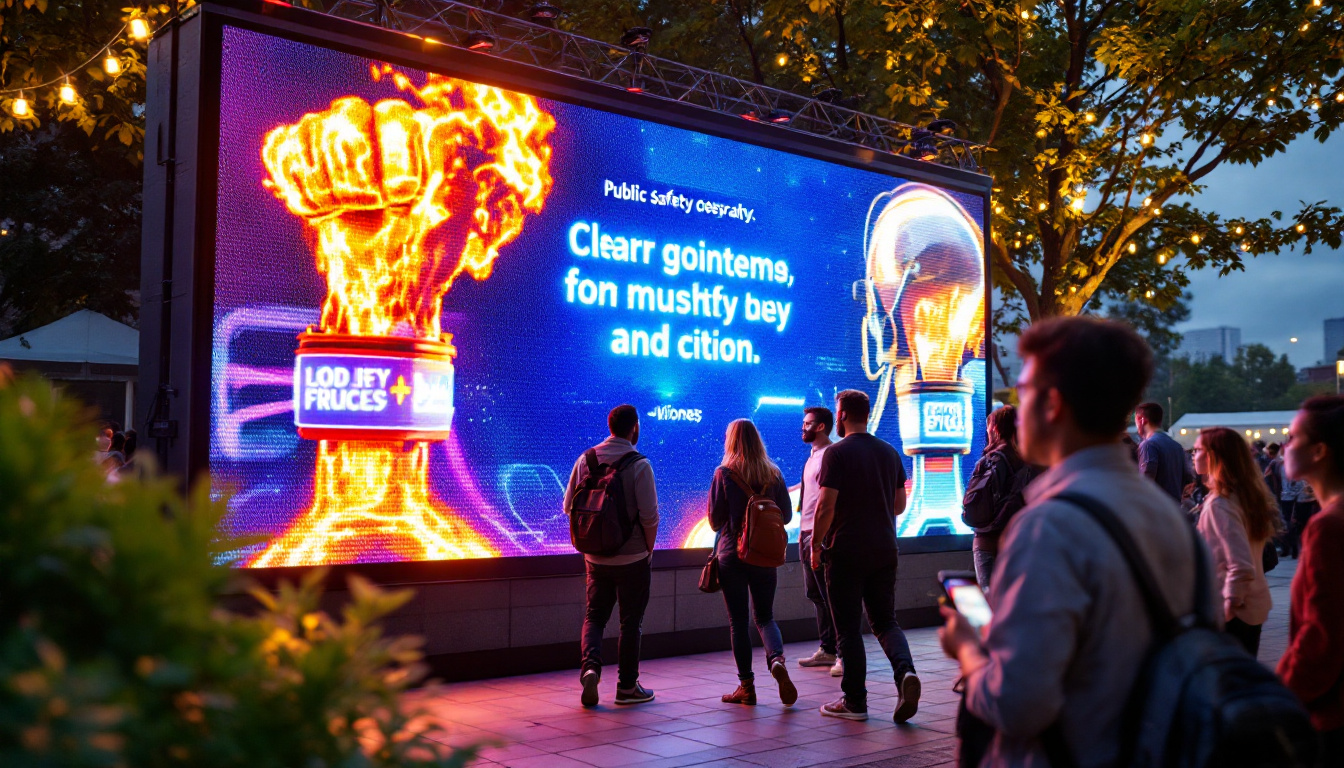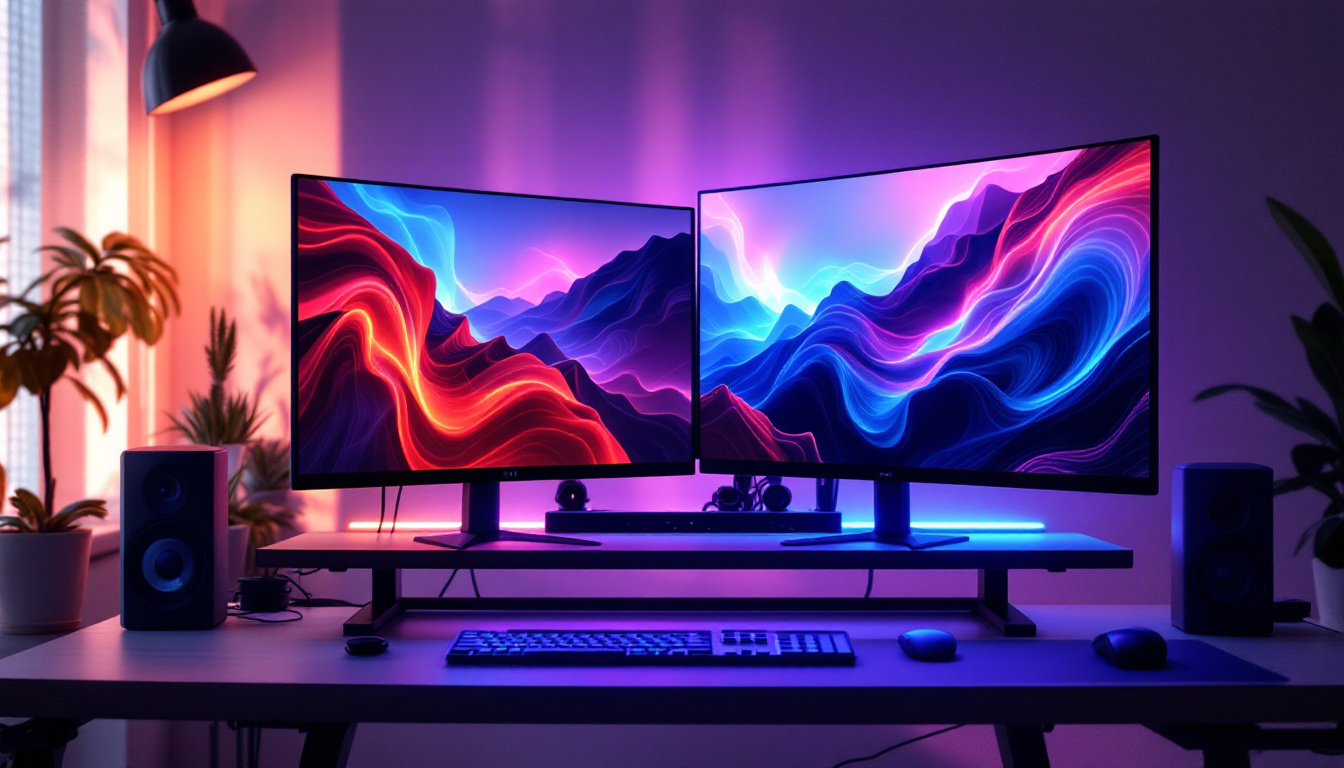Rotating LED Screen: LED Display Explained
In the world of modern advertising and entertainment, the rotating LED screen has emerged as a powerful tool for capturing attention and conveying messages. These dynamic displays are not just visually striking; they also offer a range of functionalities that make them ideal for various applications. This article will delve into the intricacies of rotating LED screens, exploring their technology, uses, and advantages.
Understanding LED Technology
Light Emitting Diodes (LEDs) are semiconductor devices that emit light when an electric current passes through them. This technology has revolutionized the display industry, providing brighter, more energy-efficient alternatives to traditional lighting methods. Beyond their application in displays, LEDs have also made significant inroads into general lighting, automotive lighting, and even horticulture, showcasing their versatility and efficiency across various sectors.
How LEDs Work
At the core of LED technology is a simple principle: when electrons move through a semiconductor material, they release energy in the form of photons, which is visible light. The color of the light emitted depends on the materials used in the semiconductor. By combining different colors, LED displays can create a full spectrum of hues, allowing for vibrant and engaging visuals. The efficiency of LEDs is further enhanced by their ability to convert a higher percentage of electricity into light rather than heat, making them a more sustainable choice compared to incandescent bulbs.
Types of LED Displays
LED displays come in various forms, including indoor and outdoor screens, video walls, and digital billboards. Each type serves different purposes and is designed to operate under specific conditions. For example, outdoor LED displays are built to withstand harsh weather conditions, while indoor screens focus on delivering high-resolution images in controlled environments. Additionally, advancements in technology have led to the development of flexible LED displays, which can be bent and shaped to fit unique designs, expanding the possibilities for creative installations in architecture and art.
Moreover, the rise of smart LED displays has introduced interactive features that enhance user engagement. These displays can integrate touch technology, sensors, and connectivity options, allowing for dynamic content that can be updated in real-time. This capability is particularly beneficial for advertising, where businesses can tailor their messages based on audience demographics or current events, ensuring that their communications are both relevant and impactful.
The Mechanics of Rotating LED Screens
Rotating LED screens are a unique subset of LED technology that adds an element of movement to the display. This rotation can occur in various ways, including horizontal or vertical spins, and can be programmed to change angles based on viewer interaction or pre-set schedules. The dynamic nature of these displays not only captures attention but also allows for versatile content presentation, making them ideal for a variety of environments, from retail spaces to concert venues.
Design and Construction
The design of a rotating LED screen typically incorporates a robust frame that supports the display while allowing for smooth rotation. High-quality motors and gears are essential for ensuring that the screen rotates seamlessly without any jerky movements. Additionally, the LED panels themselves are designed to be lightweight yet durable, maximizing portability and ease of installation. The choice of materials is crucial; many manufacturers opt for aluminum or high-strength composites that provide both strength and a reduction in overall weight. This careful engineering not only enhances the longevity of the screen but also ensures that it can withstand the rigors of frequent movement and outdoor conditions.
Control Systems
Modern rotating LED screens are equipped with sophisticated control systems that enable users to manage the display remotely. These systems can be programmed to change the content displayed based on time, audience interaction, or even environmental factors. This level of control enhances the effectiveness of advertising campaigns and ensures that the content remains fresh and engaging. Furthermore, many control systems now integrate with cloud-based platforms, allowing for real-time updates and analytics. This means that operators can monitor viewer engagement and adjust their strategies on-the-fly, ensuring that the rotating displays are not only eye-catching but also strategically effective in reaching their target audience.
Incorporating advanced features such as touch sensors and facial recognition technology, these control systems can also adapt the content based on the demographics of the viewers present. For instance, a rotating LED screen in a shopping mall might display different advertisements depending on whether it detects a group of teenagers or families. This personalization enhances the viewer’s experience and can significantly increase conversion rates for businesses utilizing this technology. As the industry continues to evolve, we can expect to see even more innovative applications and integrations that further enhance the capabilities of rotating LED screens.
Applications of Rotating LED Screens
The versatility of rotating LED screens makes them suitable for a wide array of applications across different industries. From advertising to entertainment, their dynamic nature allows for innovative uses that can significantly enhance viewer engagement.
Advertising and Marketing
In the advertising sector, rotating LED screens offer brands a unique way to showcase their products. These displays can rotate to present multiple advertisements in a single location, maximizing exposure without requiring additional physical space. The movement draws attention, making it more likely that passersby will notice the ads.
Events and Entertainment
At concerts, festivals, and other events, rotating LED screens can create immersive experiences. By rotating to face different sections of the audience, these displays ensure that everyone has a clear view of the visuals, enhancing the overall atmosphere. Additionally, they can be programmed to sync with music or performances, adding another layer of excitement.
Public Information Displays
Rotating LED screens are also increasingly used for public information displays, such as in transportation hubs or public squares. These screens can rotate to provide real-time information to commuters, such as train schedules or emergency announcements. The ability to present information from multiple angles ensures that it is easily accessible to a diverse audience.
Advantages of Rotating LED Screens
The benefits of using rotating LED screens extend beyond their eye-catching designs. They offer practical advantages that can enhance their effectiveness in various applications.
Increased Visibility
One of the primary advantages of rotating LED screens is their ability to increase visibility. The movement of the display captures attention in a way that static screens cannot. This is particularly beneficial in crowded areas where competition for attention is fierce. A rotating screen can stand out, ensuring that messages are seen by a larger audience.
Dynamic Content Presentation
Rotating LED screens allow for dynamic content presentation. Advertisers can rotate between different messages or visuals, keeping the content fresh and engaging. This adaptability can lead to higher engagement rates, as viewers are more likely to pay attention to a display that changes regularly.
Space Efficiency
In urban environments where space is limited, rotating LED screens provide an efficient solution for advertising. By displaying multiple messages on a single screen, businesses can maximize their advertising potential without requiring additional physical space. This is particularly advantageous for small businesses looking to make a big impact.
Challenges and Considerations
Despite their many advantages, rotating LED screens also come with challenges that must be considered. Understanding these challenges is essential for businesses looking to invest in this technology.
Cost of Implementation
The initial investment for rotating LED screens can be significant. The cost includes not only the display itself but also installation, maintenance, and the necessary control systems. Businesses must weigh these costs against the potential benefits to determine if this technology is the right fit for their needs.
Maintenance Requirements
Like any technology, rotating LED screens require regular maintenance to ensure optimal performance. This includes routine checks of the mechanical components, as well as the LED panels themselves. Businesses must be prepared to allocate resources for maintenance to avoid downtime and ensure the longevity of their investment.
The Future of Rotating LED Screens
The future of rotating LED screens looks promising, with advancements in technology paving the way for even more innovative applications. As the demand for engaging advertising and immersive experiences continues to grow, the potential for rotating LED displays will likely expand.
Integration with Smart Technology
As smart technology becomes more prevalent, integrating rotating LED screens with IoT (Internet of Things) systems could enhance their functionality. This integration would allow for real-time data analysis, enabling businesses to tailor their content based on audience demographics, weather conditions, or even social media trends.
Enhanced Interactivity
Future developments may also focus on enhancing interactivity with rotating LED screens. Imagine displays that respond to viewer movements or gestures, creating a more engaging experience. Such advancements could revolutionize how brands interact with consumers, making advertising more personalized and effective.
Conclusion
Rotating LED screens represent a significant advancement in display technology, combining visual appeal with dynamic functionality. Their applications span various industries, from advertising to public information, making them a versatile tool for engaging audiences. While there are challenges to consider, the benefits they offer can outweigh the drawbacks when implemented thoughtfully.
As technology continues to evolve, the potential for rotating LED screens will only grow. Businesses that embrace this innovation will likely find themselves at the forefront of engaging their audiences in new and exciting ways. In a world where attention is a precious commodity, rotating LED screens provide a compelling solution for capturing and holding that attention.
Discover LumenMatrix’s Innovative LED Solutions
Ready to elevate your visual communication and captivate your audience like never before? Explore LumenMatrix’s comprehensive range of LED display solutions, designed to bring your brand to life. From Indoor and Outdoor LED Walls to specialized displays for Vehicles, Sports, and even Custom configurations, LumenMatrix is at the forefront of creating immersive and dynamic visual experiences. Embrace the future of advertising and engagement with our cutting-edge technology. Check out LumenMatrix LED Display Solutions today and see how we can transform your message into a visual spectacle that demands attention.

